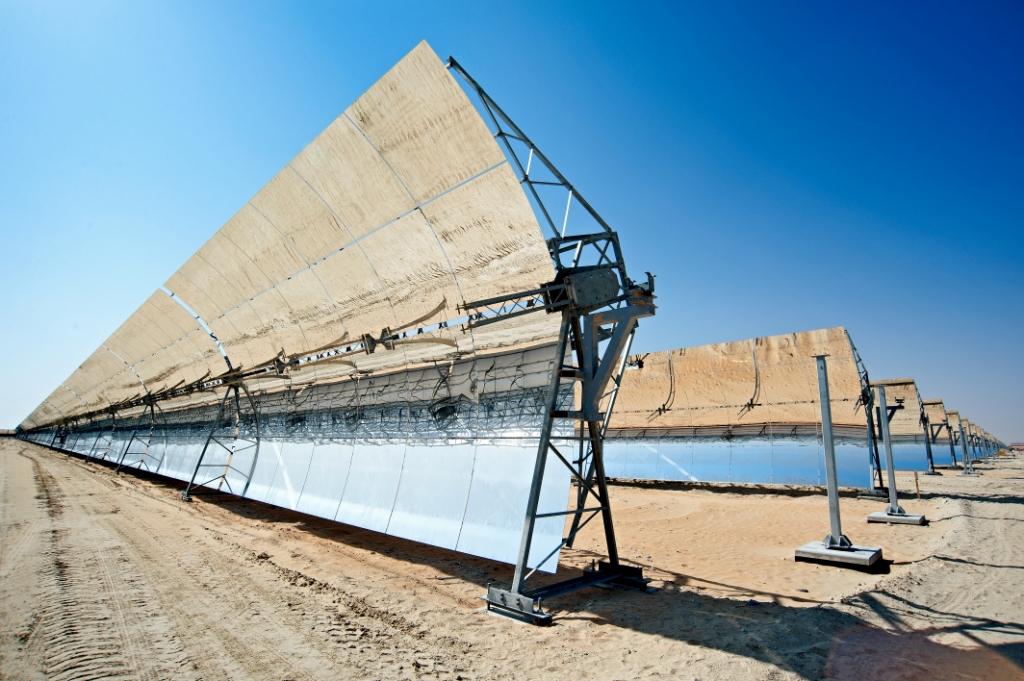World's Largest Solar Plant Goes Online

Think about energy development in the Middle East, and you'll probably think of oil.
But the petroleum-rich region is also home to the world's largest solar power facility, which started producing electricity this month.
The Shams 1 solar plant outside Abu Dhabi in the United Arab Emirates will produce 100 megawatts of electricity at full capacity, according to Bloomberg News.
That's enough energy to electrify 20,000 homes, according to a news release from the Shams Power Company, and could reduce carbon dioxide emissions by 175,000 tons each year — roughly the equivalent of taking 35,000 cars off the road, according to EPA emission estimates.
The Shams 1 plant is just one of several ambitious solar projects in the Middle East: Noor-1, a 100-megawatt solar photovoltaic facility planned for the UAE, is expected to begin development later this year, the National reports.
And Saudi Arabia plans to generate 100 percent of its energy needs from renewable sources by 2032, according to SustainableBusiness.com, while Qatar's renewable energy target is 1.8 gigawatts by 2014.
But why would a region practically soaking in oil invest so heavily in renewable energy like solar power?
Sign up for the Live Science daily newsletter now
Get the world’s most fascinating discoveries delivered straight to your inbox.
The answer: money. By reducing their own local demands for petroleum and natural gas, they can sell more of those fossil fuels on the lucrative international market, Bloomberg reports.
"The number of countries that want solar power is accelerating," Philippe Boisseau, president of new energies at Total SA, told Bloomberg. Paris-based Total is part of the consortium that developed Shams 1, along with Spain's Abengoa SA and Masdar, a UAE state-owned renewable energy company.
Shams 1 relies on a technology known as concentrated solar power, or CSP, which uses long parabolic mirrors to focus sunlight on a tube that contains liquid. The heated liquid is used to drive a steam turbine, which then generates electricity, Treehugger.com reports.
CSP technology is different from typical photovoltaic or PV technology (like the PV panels seen on rooftops worldwide), which convert sunlight directly into electricity. Solar PV technology is usually more economical, SustainableBusiness.com reports, but the heated liquids produced by CSP can be stored for times when the sun isn't shining.
The Shams 1 CSP facility has more than 258,000 parabolic mirrors on a facility spread across almost 1 square mile (2.5 square kilometers).
Ambitious as it is, Shams 1 pales in comparison to Masdar's plans to create "Masdar City," the world's first zero-carbon, zero-waste city. Currently under construction, according to SustainableBusiness.com, Masdar City is scheduled for completion in 2025.
Follow Marc Lallanilla on Twitter and Google+. Follow us @livescience, Facebook & Google+. Original article on LiveScience.com.










